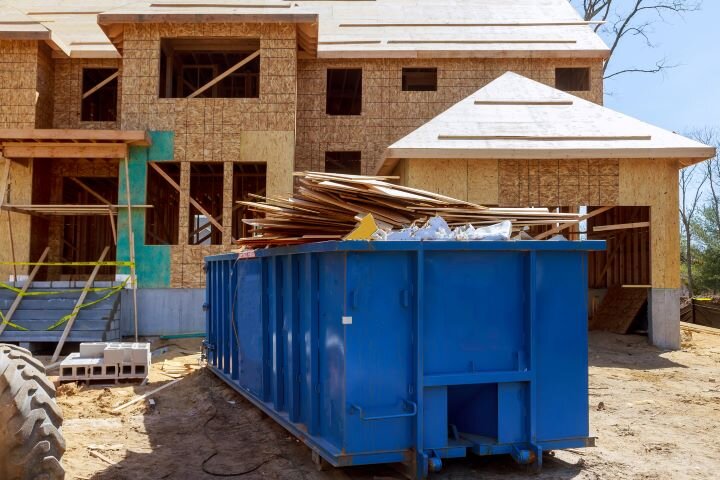5 construction project challenges solved by construction waste management
Construction waste management, much like the construction industry itself, is made up of several challenges and considerations that can affect a building project, all stemming from economics, social and environmental factors.
On the surface, construction waste management seems like a simple concept; take generated waste from a construction site and lawfully dispose of it somewhere else. However the growing rate of infrastructure and construction projects means waste management requires deeper analysis and greater attention. In 2020 it was reported that construction waste increased by 22 per cent since 2016-17 [1], with growth rates expected to continue increasing alongside development pipelines.
Growing rates of construction waste mean it has never been more important to look more closely at your construction project’s waste management plan and consider incorporating a recycling element. Recycling construction waste may involve reclaiming and restoring suitable building materials like wood and metal for future use, or working with a company like MET Recycling to process construction waste into new products such as road base & aggregates.
A highly considered waste management plan that incorporates recycling practices can help construction companies, sub-contractors and site managers address a number of challenges. Here are just a few.
Embodied carbon in construction
Embodied carbon refers to CO2 emissions that are produced as a result of the building material manufacturing process. This includes emissions caused by resource extraction, the manufacturing process and transportation. Generating CO2 emissions is an inevitable by-product of creating new construction materials, and not only contributes to additional greenhouse gas in the atmosphere but also creates more expensive materials. With a thoughtful construction waste management plan that incorporates construction and demolition (C&D) waste recycling, materials can be recycled or repurposed, reducing embodied carbon and product cost.
On-site safety
According to Safe Work Australia, Harmonised Work Health and Safety (WHS) laws ‘require you to take care of the health, safety and welfare of your workers, including yourself and other staff, contractors and volunteers, and others (clients, customers, visitors) at your workplace’ [2]. This becomes difficult if a construction site is littered with piles of brick and concrete rubble or waste building materials like wood and metal, especially if there are also hazardous elements like asbestos. Arranging haulage and disposal of construction waste is essential to the health and safety of site workers and visitors and is vital to maintaining your law-abiding duty of care.
Environmental Impact
Construction waste management and recycling can prevent the detrimental impact waste can have on the surrounding ecosystem, especially when its contents and location on site isn’t considered. This was seen in 2021 during the NSW Environment Protection Authority’s ‘Get The Site Right’ campaign, which found cases of construction waste sediment tracking off site into waterways and concrete slurry washed into stormwater drains [3]. This not only damages the environment but can damage a company’s reputation, especially if made public by the NSW EPA, who publicly release the names of companies that are fined for environmental infringements.
Community relations
From air pollution and odour to stray fragments of glass, wood or metal, there are several ways construction waste can negatively affect those living near a construction site. Even community aesthetics can be impacted by waste that is not removed in a timely manner. It can lead to complaints that may result in reputation damage or could affect a company’s ability to secure future construction approval. Being a good neighbour by ensuring waste is disposed of in timely manner will help to secure goodwill in the community and increase positive company reputation. Company reputation can improve even further if waste is recycled, which can be marketed as a commitment to providing sustainable construction in the community.
Economics
Incorporating recycling into your waste recycling management plan can help decrease the cost of virgin materials and disposal fees, helping to streamline budgets and increase profit. In 2011, the Department of Agriculture, Water and the Environment reported that stakeholders in the construction industry cited the cost of landfill as a significant driver for re-use and recycling of C&D waste [4].
If you want to maximise your disposal of recyclable materials out of your construction or demolition projects, contact MET Recycling on 1300 MET 123 or make an online enquiry. We provide affordable and comprehensive services for your construction needs.
[1] https://www.abs.gov.au/statistics/environment/environmental-management/waste-account-australia-experimental-estimates/latest-release
[2] https://www.safeworkaustralia.gov.au/covid-19-information-workplaces/industry-information/building-and-construction/duties-under-whs
[3] https://www.epa.nsw.gov.au/news/media-releases/2021/epamedia210714-more-education-for-builders-and-renovators-needed-about-the-impact-of-sediment-runoff
[4] http://www.environment.gov.au/protection/waste/publications/construction-and-demolition-waste-guide

